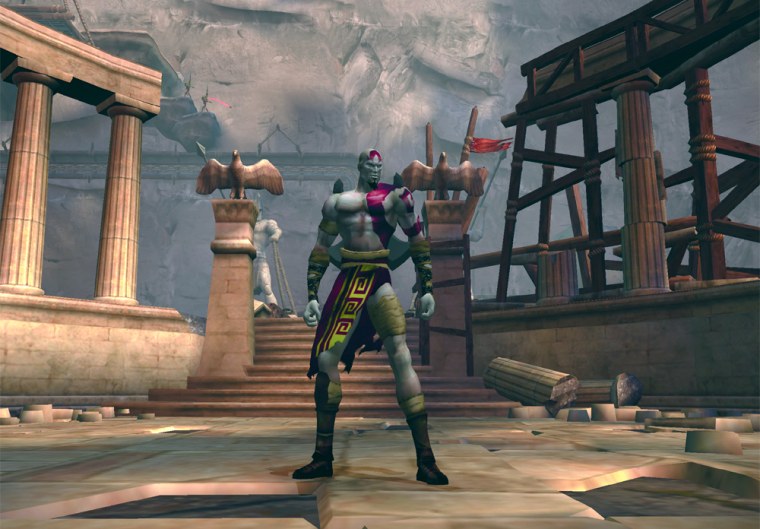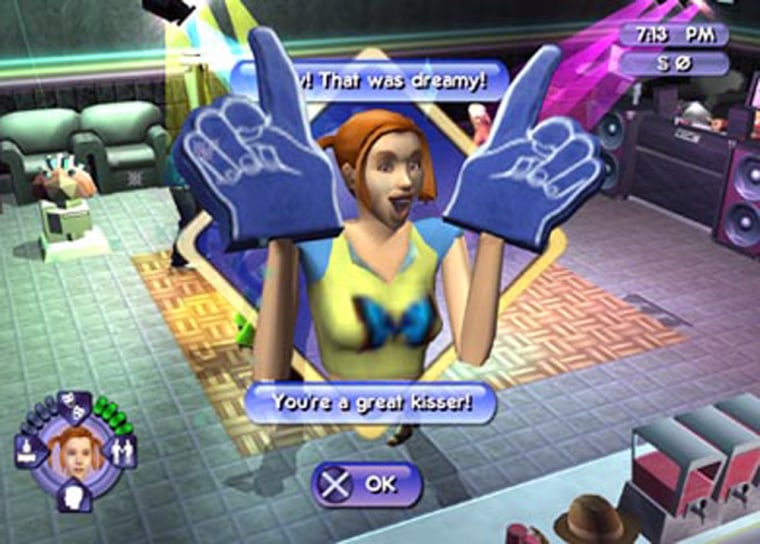Last month's E3 did little to dissuade the stereotype that the only women working in video gaming do so in camouflage bikinis.
Touring the show floor with several female students, Jason Chu, chief operating officer with the DigiPen Institute of Technology, got a taste of the backlash to the industry's testosterone-laden sensibilities.
"We were looking at these posters of women in outfits," Chu recalled. "And one turned to me and said, 'This is why women aren’t in games.'"
Blame gaming's nerdy male history or even society's expectations on what men and women can do for a living, but there's no denying that the people who create games are overwhelmingly male.
The times, they are (finally) a changing, however. Already well-represented in marketing and public relations, women are now moving into the creative areas of coding, design, art and production.
Advocates say it's about time. The industry needs not just gender diversity, but a diversity of ideas they hope will lead to new types of games and, ultimately, new players. The challenge is finding the talent.
'People make games they like to play'
At stake are some big issues for an industry that grossed $7 billion in the United States in 2003.
Getting more women involved in creating games isn't just the right thing to do, it's good business, said Laura Fryer, director of the Xbox Advanced Technology Group at Microsoft.
"Half of the population isn’t having input into what’s being created," Fryer said. "And the one thing that I learned is that people make games they like to play. Having a diverse opinion helps games."
It's a point seconded by Sheri Graner Ray, a senior game designer for Sony Online Entertainment. The game industry, by virtue of its overwhelmingly male employee-base, is missing a big market, she said.
"The thing the industry is coming to realize is that its targeted male 15 to 25 demographic isn't growing like the industry is growing," she said.
Studies report that while women players dominate online arcade and puzzle games, the multi-billion dollar PC and console market is another story. All told, according to the trade group Entertainment Software Association, women account for 39 percent of all players.
The solution to this dearth of female fandom, both Ray and Fryer agreed, lies in recruiting more women coders, artists and level designers, the type of positions that can shape a title's story, look and gameplay.
Ray, author of the book "Gender Inclusive Game Design: Expanding The Market," cautioned against assuming stereotypical notions of what that would mean.
The purpose of recruiting women is not so they can make games "about pink fluffy kitties," she said. "You can’t say that women like this or Japanese gamers want this."
Life in the trenches
At Sony's Santa Monica offices, development director Shannon Studstill said that women's role in game development goes beyond crunching code. "You have a bunch of guys and you’ll get one flavor, but bring women in and it changes things, it’s a whole different dynamic," she said.

Her current title, a Greek myth-inspired action game called "God of War," hardly sounds like a genre-changing game, but Studstill, whose team of 45 includes seven women, insisted that merely having women on the team influences the process. "There’s more camaraderie and teamwork that revolves around females," she said.
Over at Insomniac Games, creators of the "Ratchet & Clank" series, game designer Lesley Mathieson said that being one of 12 women in a development staff of 100 may mark her as "unusual," but it's about building quality games that, she believes, will ultimately lure more women. "Already 20 to 30 percent of our fan mail comes from female players," she said.
But it's at Maxis, home of "The Sims," where the argument that women creators can draw women players holds water. "The Sims" boasts an audience that is 50 percent female, unheard of with most PC and console games. The staff is 25 percent female including two directors of development, a senior project director and additional senior production staff.
Lucy Bradshaw, vice president and executive producer, said that women involved early in "The Sims" production process "brought a lot of rounding out" including, she said, an insistence by one female member during the early design process that the kids portrayed in "The Sims" not act like "deadweight."
But Bradshaw was hesitant to credit "The Sims" popularity among women players to a women's touch. The reasons for its success, argued Bradshaw, is the willingness of game creator Will Wright's to support a diversity of ideas. And it just so happened that many of the people who supplied ideas were women.
Finding the talent
Game publishers agree that they need to hire more women, an important change in attitude all by itself.
"It used to be that 'girls were coming and spoiling the fun.' Now it’s like, 'Gosh, how can we get more women?'" said Sony's Ray.
The challenge is that demand now far outstrips supply.
Marc Mencher, president of an industry job placement firm called GameRecruiter.com, said that it's got to the point where some companies specifically request women. "It's bonus points," he said. "especially if I find a level designer or a programmer."
No one knows the exact number of women involved in creating or producing video games. Jason Della Rocca, program director for the International Game Developers Association estimated that women make up 10 to 15 percent. Ten years ago, he said, the number was 1 to 2 percent.
It's an improvement, but according to Della Rocca, "the sad thing is that the median is probably much lower. That is, many studios have zero to 1 percent women, whereas companies like Maxis with 40 to 50 percent help bring up the average."
Della Rocca blamed gaming's roots for the gender divide. "The game industry was created by engineers and programmers; it was very much a nerdy, techie and very male club," he said.
And then there are societal expectations, said GameRecruiter.com's Mencher.
"Look at our culture and at what women are encouraged to do as careers," he said. "Women are not encouraged to be a geek."
At the DigiPen Institute of Technology in Redmond, Wash., the game development program focuses on the type of math and advanced programming languages needed to make it as a game programmer. Of the 400 students who have passed through over the last several years, only a handful were women, according to administrator Jason Chu.
"It’s not that women can’t do programming," Chu said. "It's that they just aren’t aware of game development as a career option."
Slowly, that's changing. Studstill and Bradshaw, for example, are among women gaming professional who help recruit potential hires at schools like MIT and USC's game and film program. And in September comes the Women's Game Conference in Austin, Texas, the first major industry event dedicated to women in gaming. Both Fryer and Ray are on the steering committee.
Wanted: More story tellers, fewer coders
Of course, one way to make women more aware of gaming as a profession is to make them more aware of gaming as a hobby -- to turn them into the types of hardcore gamers whose passion leads them to seek out positions in the industry; a common path for most, if not all of the men in the industry.
Call it -- pardon my male slang -- the "chick" and egg challenge. Which comes first? The woman player or the woman creator building a more female-friendly game?
Ultimately the answer may not lie in how, but when. With consoles like the Sony Playstation 2 occupying at least 40 percent of American households, more young girls than ever are growing up taking games as a given.
And finally, changes in the way games are built indicate less of a future demand for coders, but more of a demand for artists, producers, story tellers and designers -- fields traditionally better represented by women.
"We've moved away from relying simply on code," said Della Rocca. "It's become more of an artistic medium."
So, in the years to come, thanks to social and technological forces, the game industry's reputation as a boys' club may be as out-dated as a copy of "Frogger."
Does this mean that future E3's will have G-stringed men gyrating alongside the "booth babes?" That's one trend I prefer not to think about.
